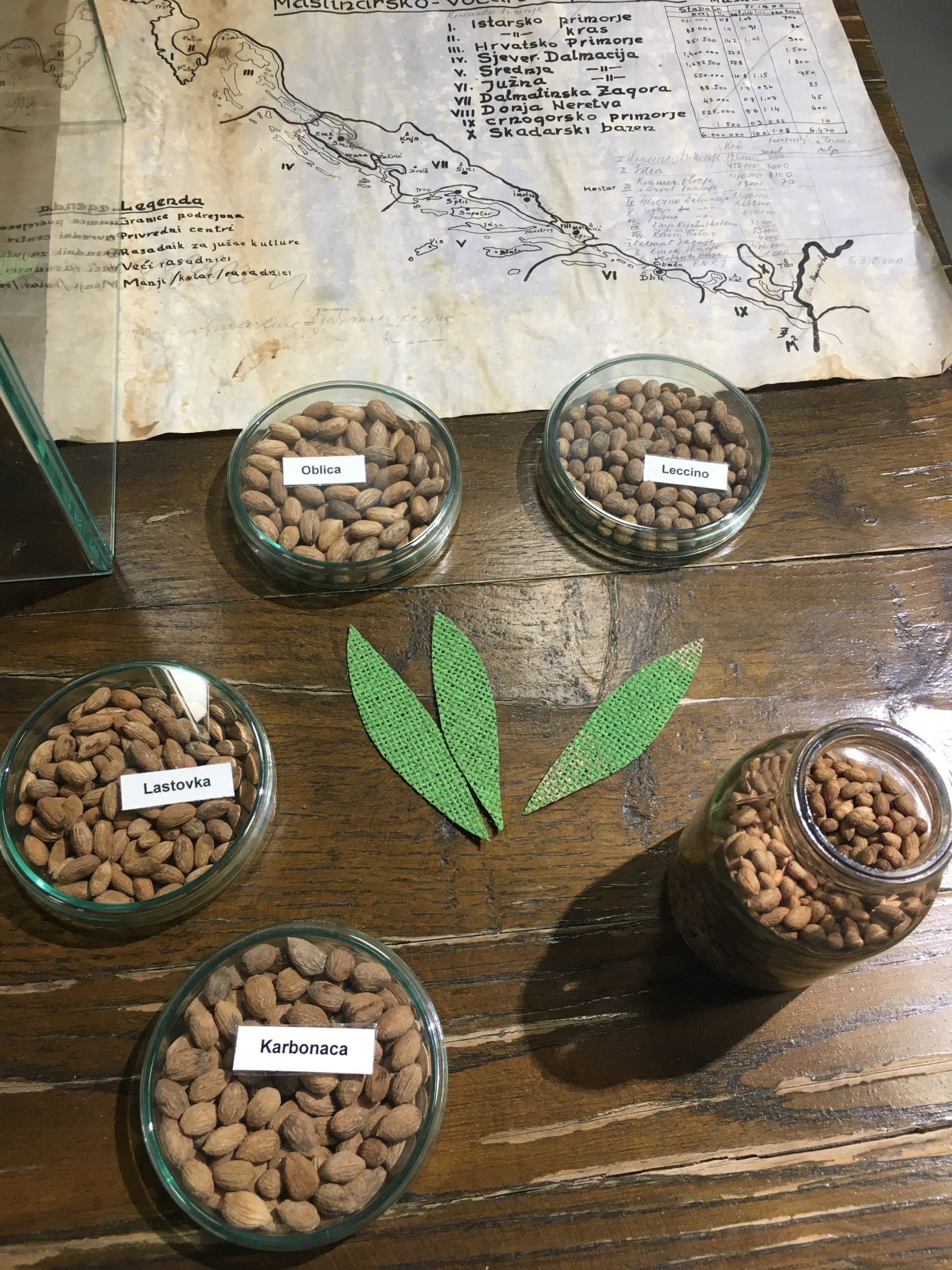
Continuing the pandemic trend of living vicariously through the travels of my past self, this post references my journey around the Mediterranean basin from summer 2019. One of the places we visited on that trip was an olive oil producer, Stella Croatica, near Split, Croatia.
Split is a particularly interesting town, as it’s essentially built around a Diocletian’s Palace, a Roman structure constructed in the 4th century CE. The structure was built as a retirement palace for the emperor Diocletian, as he grew up in the nearby town of Salona, and wanted to return to the area later in life. The structure was heavily fortified, with one side originally fronting the water, making it easy to defend. Those strong defenses came in handy well after Diocletian and the Roman Empire were gone, as people sought a safe place to live, and moved into the palace structure, adding additional living space within the fortified walls. Due to this ongoing occupation, the palace did not fall into ruin like many similar Roman structures nearby. Today, after work by archaeologists, you can walk through the palace and see the ancient Roman roads, medieval churches built into the walls, and modern shops, restaurants, and apartments all in the same footprint. If you like historical re-enactments, you can see some Roman centurion guards hanging around the main square on most days.
Stella Croatica is located a bit outside the city of Split, near Klis Fortress (which was one of the filming locations for Game of Thrones). Stella Croatica produces their own olive oil, as well as small quantities of essential oils, and products made from local figs and honey. They offer opportunities to taste olive oil and a museum describing olive growing and olive oil production in the region throughout history. As discussed previously, olives have many different cultivars, and 60-70 different cultivars are grown across Croatia. In the Dalmatia region, oblica olives are the most common, covering about 75% of the olive-producing land. In addition, Italian leccino olives are the most common introduced cultivar grown in the Dalmatia region.

Small-scale pressing, as might have been done on a single farm, was performed using a small stone mill that could be handled by a small number of people. The olives were crushed into a paste by rolling the stone back and forth. The paste was then loaded into bags, and pressed inside a wooden tub, typically with the assistance of a person standing on top of the paste bag in wooden shoes. Traditionally boiling water (or boiling seawater) was used to help separate all the oil from the oil paste.

Large-scale olive oil production (town level) used large stone mills to press the olives and create oil. The earliest mills were powered by people, and later by animals such as donkeys. All the olive producers in the town would bring their olives to a central location to be pressed into oil. The olives would be ground between large stones, and the past produced was transferred to bags made of hemp or coconut fibers. Stacks of these bags filled with olive paste were then pressed to express the oil. Modern production methods employ either a hydraulic press or a centrifuge to remove the oil from the olive paste.

As a result of bringing oil to a central location, one of the key issues for small farms was how to keep the olives fresh before pressing. Current standards for extra-virgin olive oil require same-day pressing to minimize degradation of the olives and off-flavors in the oil; however, this was not feasible for many small growers earlier in the 20th century. At the time, many producers stored olives in seawater before pressing. This process kept the olives fresh before pressing, and also leached out some of the bitter compounds in the olives, making for a milder oil.

I learned quite a bit about olive and olive oil production while visiting Stella Croatica, and also enjoyed a wonderful meal, and a walk through the gardens. Split is a lovely town (check out the public beach below) with a fascinating history. If you have the opportunity to visit Croatia, I would recommend a stop in Split, and a visit to Stella Croatica if you are interested in olive oil and local products.




